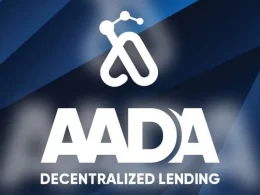Crowdano proposes to ensure funds from a crowdfunding campaign are used, in a timely manner, for the development for which they were intended. One of the many risks is that investors assume the success of the project in which they are investing capital and yet this depends on the proposal itself.Another risk is who’s taking the funding. Many times the funds are not used for the intended purpose, and this is where Crowdano promises to act.
Traditional Crowdfunding
Crowdfunding had its beginnings in donations. With the advance of technology, it has received the attention of merchants and entrepreneurs, who, using social networks and micropayments, made donations simpler and safer. This is how it evolved to become a collaborative mechanism for financing projects.
This system dispenses with traditional financial intermediation, and consists of connecting project promoters who demand funds through the issuance of securities and social shares, or by requesting loans, with fund investors, called sponsors, who seek a return on their investment.
Two characteristics stand out in this activity: the massive gathering of investors who finance small, high-potential projects with small amounts, and the risky nature of such investment.
Are you familiar with the concept? Yes, of course, it is the same concept on which decentralized finance, DeFi, is based.
Currently, there are five crowdfunding models, one based on donations, one based on rewards, one based on shares, one based on loans and one based on royalties.
The major crowdfunding platforms, such as Kickstarter, IndieGoGo and GoFundMe, have had great success in recent years, however, they require a great deal of trust from investors that their money is going to be used as they expect, and that they will receive the expected reward or benefit.
Wharton University of Pennsylvania conducted a study on Kickstarters, surveying nearly 500,000 backers. The study analyzed failures and found that:
- 9% of projects failed to deliver rewards;
- 8% of pledged dollars went to failed projects;
- 7% of backers did not receive their chosen reward; and
- 65% of backers agreed, or strongly agreed, that “the reward was delivered on time.”
Crowdano Crowdfunding Platform aims to reduce the demand for trust required from investors, through the use of smart contracts, as will be explained later in the proposal.
The Proposal
Edward Jane proposes a crowdfunding platform based on Cardano, which implements a staged funding model, to protect backers’ investments.
This project was presented in the FUND3, with a large number of votes, it was the 5th most voted project, but did not get funding only for $ 1,000. The funds are being allocated to each winner, and so the balance is available for the next one, in the voting ranking. Crowdano Crowdfunding Platform requested funds for USD 24,030 and the availability for its ranking was USD 23,035.
You can see the result of FUND3 here.
The Crowdano platform can enjoy low fees, fast transactions and a large community, thanks to the scalability of the Cardano blockchain. The platform can enable campaigns from a few hundred ADAs to thousands.
This model avoids scams, or negligence due to non-compliance by the person responsible for the funded projects, when a product is promised and never delivered. This model is based on staged funding, whereby campaigns will initially receive only a small percentage of the funding awarded, and thus the project receives partial funding for start-up.
The staged funding model is explained in a step-by-step process below.
- A project developer launches its campaign with a desired target amount, and a specified initial payment amount.
- Backers research the campaign, and assess whether they believe the project has potential, and whether they would like to back it.
- If, after the campaign deadline has passed, the project has been successfully funded (i.e. the amount raised is above the target), the initial funding is handed over to the project owner. If the target is not reached, all backers receive a refund of their investment.
- Once the project owner has reached a milestone in their project and wishes to receive the next phase of funding, they can request an amount from the funding pool. This initiates a vote, in which sponsors vote on whether they believe the milestone has been successfully completed, and whether the requested amount is acceptable.
- If this vote passes, the next phase of funding is released to the project owner. If the vote does not pass, sponsors have the opportunity to wait for further evidence that the milestone has been completed, or they can initiate a reimbursement vote.
- If the refund vote passes with a specified quorum, all remaining backer contributions are refunded.
Developer Edward Jane, clarifies to us that this project is not intended to create the perfect crowdfunding platform from day one, but rather intends to use the funds from this proposal to create the first usable version of the platform before growing over time, evolving into solving problems the community has or implementing improvements.
Included in this stage of the FUND5 proposal is the development, testing and auditing of the smart contracts needed for the project, the design and implementation of a front-end website and the legal framework to protect backers and fundraisers alike, ensuring that the platform can operate within the law in various countries.
I contacted Edward, who informed me that smart contracts are currently at a stage where campaigns can be created and funded, and that he is currently working on voting functionality for the platform.
How Will Crowdano Become Sustainable?
In the future, the platform will be maintained thanks to small fees, of approximately 2%, that will be applied to fundraising campaigns (platforms such as Kickstarter, charge fees of 5%). But this fee will not apply if a project fails to raise sufficient funds, nor will it apply to investments returned to backers. These fees will be clearly indicated on the platform so that campaigns can be considered when raising funds. These fees are primarily intended to pay for web hosting and management of the platform.
In the future, it is planned to allow payments in fiat and other cryptocurrencies such as stablecoins.
Governance
After launch, changes to the Crowdano platform will be governed by governance tokens.
These tokens will allow users to vote for or against proposed changes to the platform.
Initially these tokens will be distributed to delegates in the Crowdano Crowdfunding stake pool, [CROWD]. Eventually, however, it will be possible to earn tokens by launching products using Crowdano, or even donating to projects.
The website https://crowdano.io says that by delegating to CROWD, you help fund the development of the Crowdano crowdfunding platform. 10% of the profits from each epoch will go to development. It operates a single pool, which helps promote decentralization on the Cardano blockchain, and promises never to create multiple pools. In addition, Crowdano aims to help those in need by donating 20% of its profits to charities every time it forges a block. It also says it has reliable servers, which run on renewable energy, and thus helps Cardano to be even more environmentally friendly.
Edward said he will publish the development on Github for transparency, as the smart contracts needed for the project must be open source, improving security. He thus relinquishes intellectual property rights, to promote community participation.
Roadmap and Performance Indicators
The platform aims to be completed in 6 months, however, it is possible that the project will be completed before the smart contracts are launched on the main network.
Once deployed, the platform aims to have at least 50 active campaigns in the first 6 months, and this number will grow rapidly in the future. This will be achieved by using a marketing company to ensure that the platform reaches as many potential users as possible.
Edwrad Jane, commented to me that “…The website is nearing completion and we have a company working on that at the moment. Testing is currently being done in tandem with development so before progressing to the next part of the contract a rigorous testing procedure is undertaken to make sure the contract behaves as expected.”
The final version of the Whitepaper is under development, to which I had access to its draft, courtesy of the developer, which addresses, among other topics, tokenomics for governance, crucial in my view, for a clear monetary policy.
Budget
Smart contract audit – USD 5.000
Website development – USD 10,000
Web hosting and domain – USD 1,000
Marketing – USD 10,000
Legal advice – USD 5,000
Salary – USD 0, the developer proposes not to charge for his personal work, as a firm believer in this project.
Security margin of USD 2,000 to cover delays or unforeseen expenses.
Total: USD 33,000.
The Developer’s Experience
Edward Jane tells us that he has over 7 years of experience in software development with knowledge of several programming languages such as Python, Java, Javascript, Solidity, HTML, PHP and SQL.
He was also a member of the Plutus Pioneer program, which allows him early access to the Plutus testing network, to test smart contracts prior to their launch.
In this video, from the YouTube channel “Cardano Podcast”, we will watch Edward Jane’s interview, from February 2021, when he submitted his proposal to FUND3.
https://www.youtube.com/watch?v=jNWyOusHnks
If you want to read the Full Crowdano proposal, visit the Ideascale link for Crowdano Crowdfunding Platform









